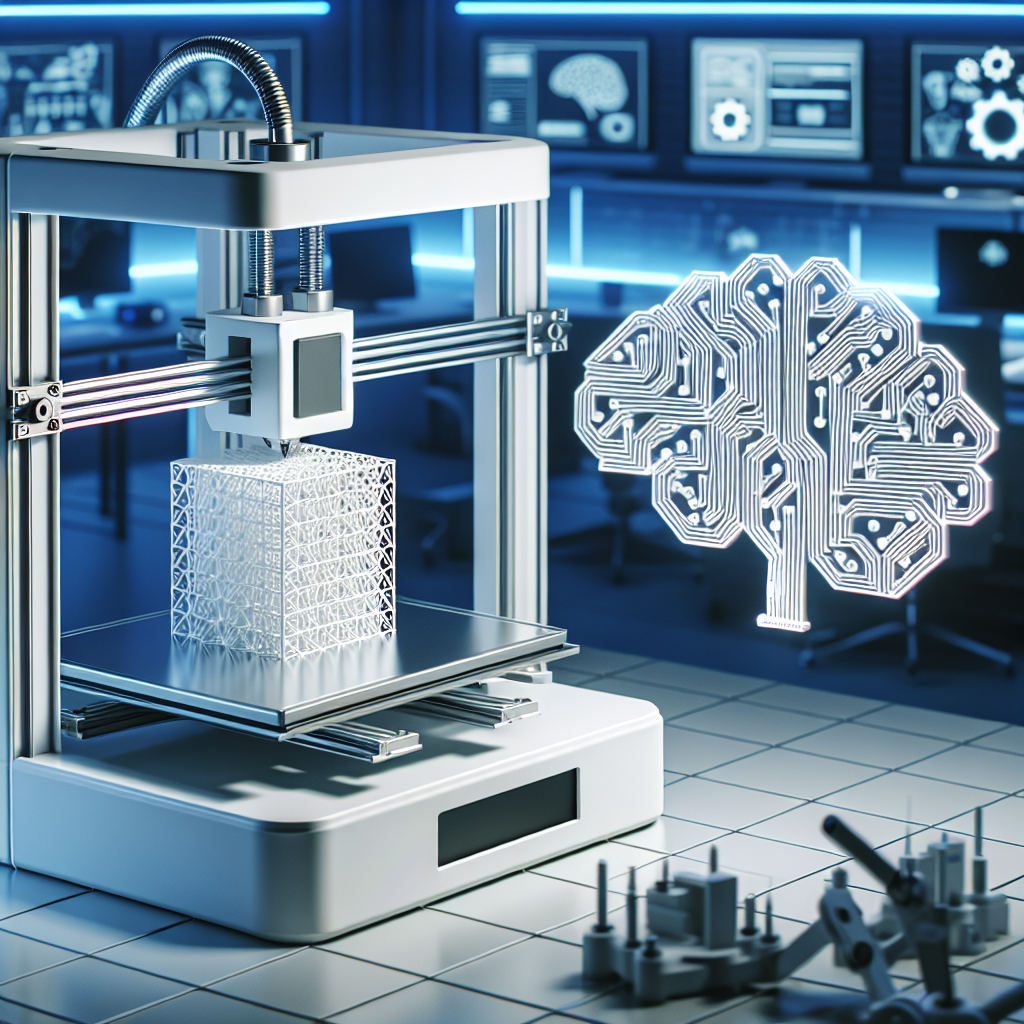Artificial Intelligence (AI) and Additive Manufacturing, also known as 3D printing, are two cutting-edge technologies that are revolutionizing industries across the globe. When combined, these technologies have the potential to transform the way we design, manufacture, and distribute products. In this article, we will explore the intersection of AI and additive manufacturing, discuss their benefits and challenges, and look at some real-world applications.
Artificial Intelligence and Additive Manufacturing: A Powerful Combination
Artificial intelligence refers to the simulation of human intelligence processes by machines, typically through the use of algorithms and data. AI systems can analyze vast amounts of data, identify patterns, and make decisions without human intervention. Additive manufacturing, on the other hand, is a process of creating three-dimensional objects by adding material layer by layer. This technology allows for the production of complex shapes and structures that would be impossible to achieve with traditional manufacturing methods.
When AI and additive manufacturing are combined, the result is a powerful tool that can streamline the design and production process, improve product quality, and reduce costs. AI algorithms can analyze design data and optimize the manufacturing process to create more efficient and durable products. Additive manufacturing allows for rapid prototyping and customization, making it ideal for small-batch production or on-demand manufacturing.
Benefits of AI and Additive Manufacturing
There are several benefits to integrating AI and additive manufacturing in the manufacturing process. Some of the key advantages include:
1. Design optimization: AI algorithms can analyze design data and identify areas for improvement, leading to more efficient and cost-effective product designs.
2. Rapid prototyping: Additive manufacturing allows for the quick production of prototypes, enabling companies to test and iterate on designs faster than ever before.
3. Customization: Additive manufacturing can produce highly customized products tailored to individual customer needs, leading to higher customer satisfaction and loyalty.
4. Supply chain efficiency: AI can analyze supply chain data and optimize production schedules, reducing lead times and improving inventory management.
5. Sustainability: Additive manufacturing produces less waste than traditional manufacturing methods, making it a more environmentally friendly option.
Challenges of AI and Additive Manufacturing
While the benefits of AI and additive manufacturing are clear, there are also some challenges that need to be addressed. Some of the key challenges include:
1. Data security: AI systems rely on vast amounts of data to make decisions, raising concerns about data privacy and security.
2. Skill gap: Implementing AI and additive manufacturing requires specialized knowledge and skills, which may be lacking in some organizations.
3. Cost: The initial investment in AI and additive manufacturing technology can be high, making it a barrier for smaller companies.
4. Regulation: The use of AI in manufacturing raises ethical and legal questions that need to be addressed by policymakers.
Real-World Applications
Despite these challenges, AI and additive manufacturing are already being used in a variety of industries to improve efficiency and innovation. Some real-world applications of AI and additive manufacturing include:
1. Aerospace: Additive manufacturing is being used to produce lightweight, complex parts for aircraft engines, leading to improved fuel efficiency and performance.
2. Healthcare: 3D printing is being used to create custom implants and prosthetics for patients, improving patient outcomes and reducing costs.
3. Automotive: AI algorithms are being used to optimize vehicle design and production processes, leading to more fuel-efficient and durable cars.
4. Fashion: Additive manufacturing is being used to create custom clothing and accessories, allowing designers to experiment with new shapes and materials.
FAQs
Q: How is AI used in additive manufacturing?
A: AI algorithms can analyze design data, optimize production processes, and improve product quality in additive manufacturing.
Q: What are the benefits of combining AI and additive manufacturing?
A: The combination of AI and additive manufacturing can lead to design optimization, rapid prototyping, customization, supply chain efficiency, and sustainability.
Q: What are some real-world applications of AI and additive manufacturing?
A: AI and additive manufacturing are being used in industries such as aerospace, healthcare, automotive, and fashion to improve efficiency and innovation.
Q: What are some challenges of implementing AI and additive manufacturing?
A: Challenges include data security, skill gap, cost, and regulation that need to be addressed by companies and policymakers.
In conclusion, the combination of AI and additive manufacturing has the potential to transform the manufacturing industry by improving efficiency, innovation, and sustainability. While there are challenges to overcome, the benefits of integrating these technologies are clear. As companies continue to adopt AI and additive manufacturing, we can expect to see more groundbreaking developments and applications in the future.

